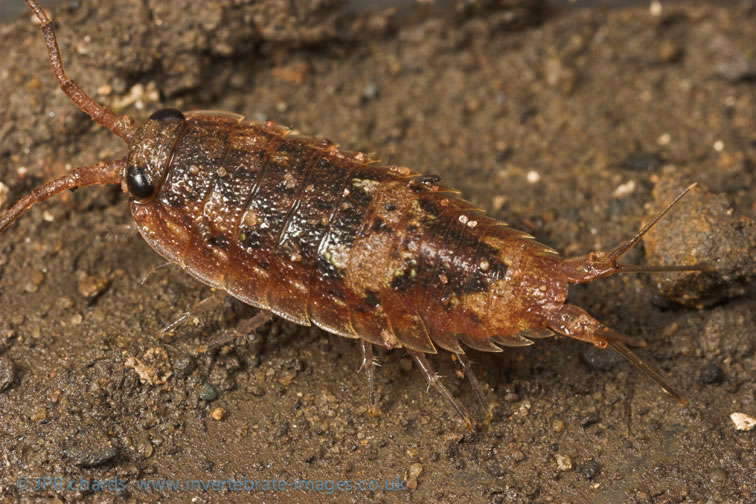Ligia oceanica (Linnaeus, 1767)
Common name
Status:
GB IUCN status: Least Concern
ID Difficulty
Identification
The Sea Slater, Ligia oceanica, is is a distinctive species due to its habitat, very large size (up to 30mm in length), large eyes comprising more than 40 ommatidia and its antennal flagellum composed of numerous bead-like segments. In the field immatures may be confused with uncommon Halophiloscia couchii (which has three flagellal segments).
Recent research using molecular markers (rather than traditional morphology) strongly suggests that Ligia is not closely allied to other terrestrial woodlice (Oniscidea) but more closely related to marine isopods of suborders Valvifera and Sphaeromatidea. See BMIG Newsletter 40, pg 5 (2020).
Distribution
Ligia oceanica is a common species around the entire coastline of Britain and Ireland, including Orkney and Shetland.
Habitat
It occurs wherever a ‘hard’ shoreline is present, such as the base of rocky cliffs, on boulder beaches, or on harbour walls and jetties.
It is readily found by turning rocks and boulders where these are present, otherwise night-time torch surveys of harbour walls, etc can be productive (where it hides within crevices by day). It is remarkably fast and agile and difficult to capture.
This summary is based on the detailed account in Gregory (2009).
References
Gregory, S. (2009) Woodlice and Waterlice (Isopoda: Oniscidea & Asellota) in Britain and Ireland. Field Studies Council/Centre for Ecology & Hydrology.













